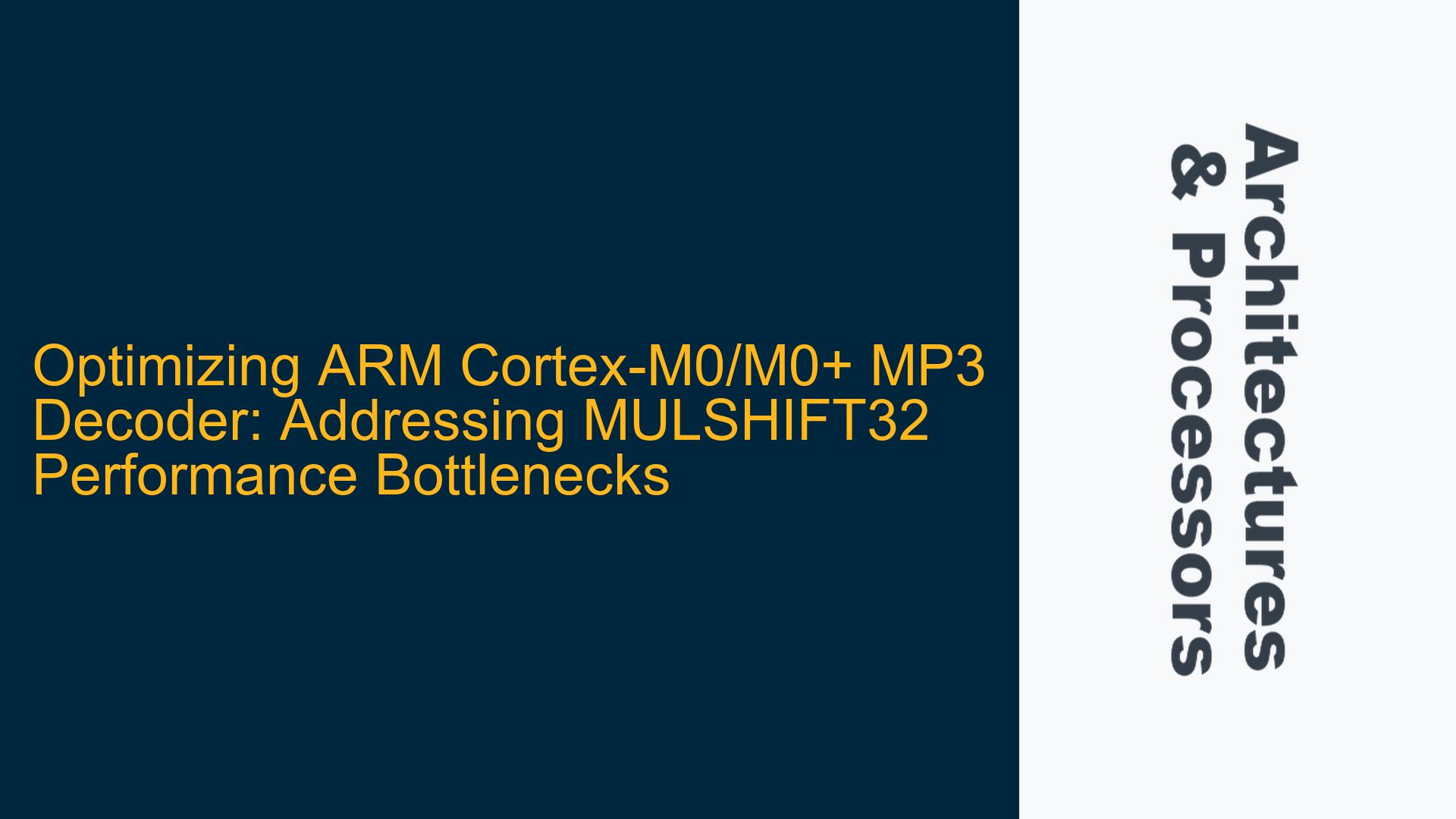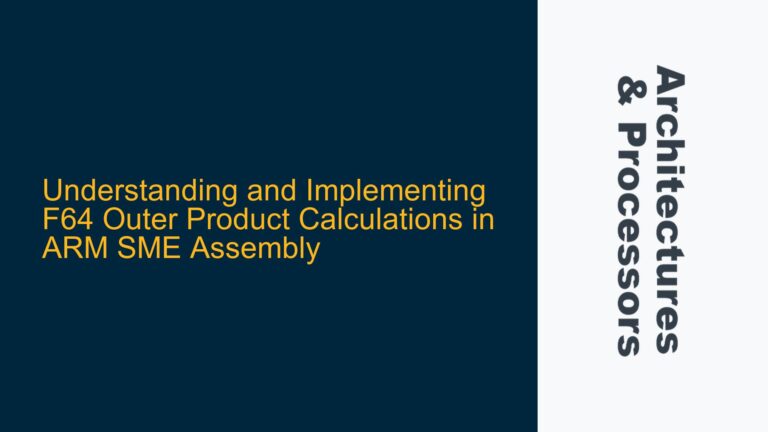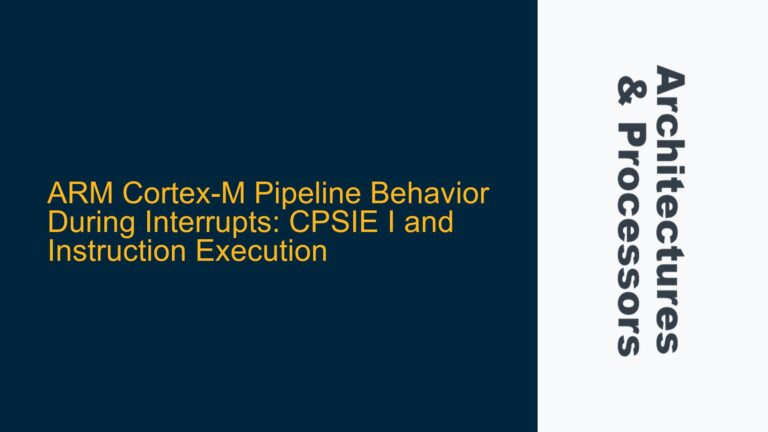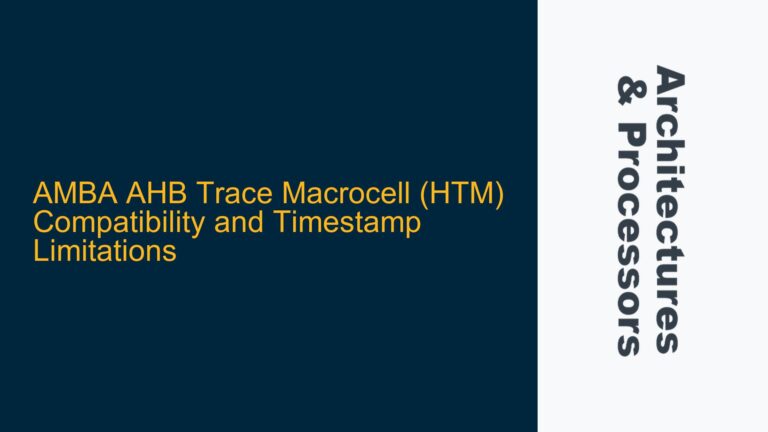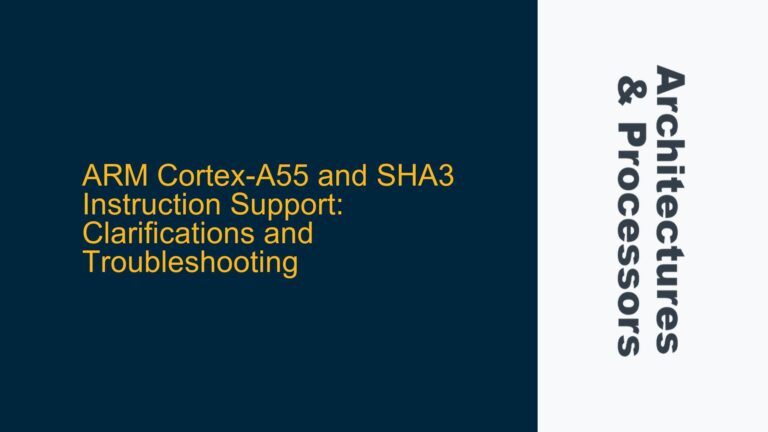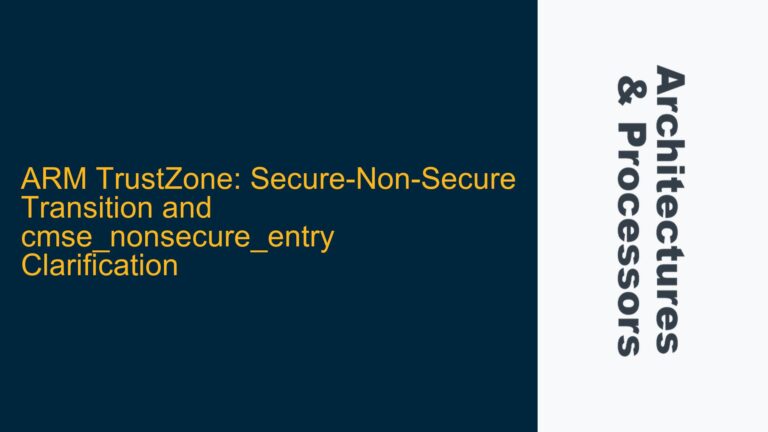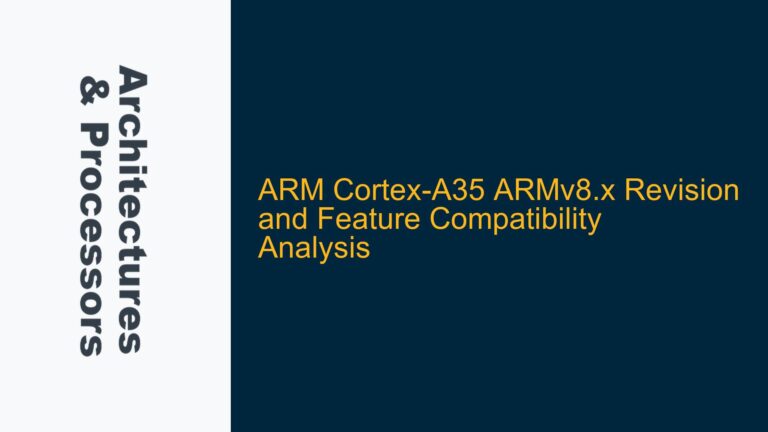ARM Cortex-M0/M0+ MP3 Decoder Performance Challenges with MULSHIFT32
The ARM Cortex-M0 and Cortex-M0+ processors are widely used in embedded systems due to their low power consumption and cost-effectiveness. However, their limited instruction set and register file can pose significant challenges when implementing computationally intensive algorithms, such as an MP3 decoder. One of the most critical performance bottlenecks in such implementations is the MULSHIFT32 operation, which computes the top 32 bits of a 32-bit x 32-bit multiplication result. This operation is heavily used in the Discrete Cosine Transform (DCT) and polyphase filter stages of the MP3 decoding process. On the Cortex-M0/M0+, this operation currently takes 17 cycles, which is a significant portion of the overall processing time. The challenge lies in optimizing this operation without compromising the accuracy or functionality of the decoder.
The DCT and polyphase filter stages constitute approximately 90% of the MP3 decoding time, making them the primary targets for optimization. The MULSHIFT32 macro is invoked multiple times in these stages, and its performance directly impacts the decoder’s ability to handle high-bitrate audio streams, such as 320 Kb/s. The Cortex-M0/M0+ architecture lacks a hardware multiplier that can directly produce a 64-bit result from a 32-bit x 32-bit multiplication, necessitating a software-based solution. This post delves into the root causes of the performance bottleneck, explores potential optimizations, and provides detailed troubleshooting steps to address the issue.
Cortex-M0/M0+ Architectural Limitations and MULSHIFT32 Overhead
The Cortex-M0/M0+ processors are based on the ARMv6-M architecture, which is designed for ultra-low-power applications. While this architecture is efficient for many embedded tasks, it has several limitations that impact the performance of the MULSHIFT32 operation:
-
Limited Register File: The Cortex-M0/M0+ has only 13 general-purpose registers (R0-R12), with R13 (SP) and R14 (LR) reserved for the stack pointer and link register, respectively. This limited register file forces frequent spills to memory, increasing the cycle count for complex operations like
MULSHIFT32. -
No Native 64-bit Support: The architecture does not support 64-bit arithmetic operations natively. The
MULSHIFT32operation must be implemented using 32-bit instructions, which requires multiple steps to compute the high 32 bits of the 64-bit result. -
Thumb Instruction Set: The Cortex-M0/M0+ uses the Thumb instruction set, which is optimized for code density rather than performance. Many instructions have limited functionality compared to the ARM instruction set, making it challenging to implement efficient multi-precision arithmetic.
-
Pipeline Stalls: The Cortex-M0/M0+ has a 3-stage pipeline, and certain instructions, such as multiplies and memory accesses, can cause pipeline stalls. These stalls further increase the cycle count for the
MULSHIFT32operation.
The MULSHIFT32 macro is typically implemented using a combination of UMULL (unsigned multiply long) and shift operations. However, the lack of a native instruction to extract the high 32 bits of the 64-bit result necessitates additional instructions, increasing the cycle count. The current implementation takes 17 cycles, which is a significant overhead given the frequency of MULSHIFT32 calls in the MP3 decoder.
Strategies for Optimizing MULSHIFT32 on Cortex-M0/M0+
Optimizing the MULSHIFT32 operation on the Cortex-M0/M0+ requires a combination of algorithmic improvements, instruction-level optimizations, and careful register management. Below are some strategies to reduce the cycle count and improve overall performance:
-
Unrolling and Inlining: Unrolling the
MULSHIFT32macro and inlining it into the DCT and polyphase filter code can reduce the overhead of function calls and improve instruction scheduling. This approach also allows for better utilization of the limited register file. -
Instruction Reordering: Reordering instructions to minimize pipeline stalls can yield significant performance gains. For example, placing memory access instructions (e.g.,
LDRandSTR) away from arithmetic instructions can reduce contention for the memory bus. -
Register Allocation: Careful allocation of registers can minimize spills to memory. Using high registers (R8-R12) for temporary storage and low registers (R0-R7) for arithmetic operations can improve performance.
-
Exploiting Symmetry: The DCT and polyphase filter algorithms often exhibit symmetry, which can be exploited to reduce the number of
MULSHIFT32calls. For example, reusing intermediate results or precomputing common values can reduce the overall computation load. -
Approximation Techniques: In some cases, it may be possible to approximate the
MULSHIFT32operation without significantly impacting the audio quality. For example, using a lower-precision multiplication or truncating the result can reduce the cycle count at the cost of a slight degradation in accuracy. -
Hardware Acceleration: If the target platform supports hardware acceleration (e.g., a DSP co-processor or a more advanced Cortex-M processor), offloading the
MULSHIFT32operation to hardware can provide a significant performance boost.
Implementing Optimized MULSHIFT32 and Validating Performance
To implement an optimized MULSHIFT32 macro, follow these steps:
-
Analyze the Current Implementation: Start by analyzing the existing
MULSHIFT32macro to identify inefficiencies. For example, determine if there are redundant instructions or opportunities for instruction reordering. -
Unroll and Inline the Macro: Unroll the
MULSHIFT32macro and inline it into the DCT and polyphase filter code. This reduces the overhead of function calls and allows for better instruction scheduling. -
Optimize Register Usage: Allocate registers carefully to minimize spills to memory. Use high registers (R8-R12) for temporary storage and low registers (R0-R7) for arithmetic operations.
-
Reorder Instructions: Reorder instructions to minimize pipeline stalls. For example, place memory access instructions away from arithmetic instructions to reduce contention for the memory bus.
-
Validate the Results: Validate the optimized
MULSHIFT32macro to ensure that it produces the correct results. Use test vectors to verify the accuracy of the implementation. -
Measure Performance: Measure the cycle count of the optimized
MULSHIFT32macro and compare it to the original implementation. Use a cycle-accurate simulator or hardware performance counters to obtain accurate measurements. -
Iterate and Refine: Iterate on the optimization process, refining the implementation based on performance measurements and validation results. Continue until the desired performance target is achieved.
Below is an example of an optimized MULSHIFT32 implementation:
; Optimized MULSHIFT32 Macro
; Input: R0 = a, R1 = b
; Output: R0 = (a * b) >> 32
MULSHIFT32:
UMULL R2, R3, R0, R1 ; R3:R2 = a * b
MOV R0, R3 ; R0 = high 32 bits of the result
BX LR ; Return
This implementation reduces the cycle count by eliminating unnecessary instructions and optimizing register usage. However, further optimizations may be possible depending on the specific requirements of the MP3 decoder.
Conclusion
Optimizing the MULSHIFT32 operation on the ARM Cortex-M0/M0+ is critical for achieving real-time MP3 decoding performance. By addressing the architectural limitations of the Cortex-M0/M0+ and implementing targeted optimizations, it is possible to significantly reduce the cycle count of the MULSHIFT32 macro. These optimizations, combined with careful register management and instruction reordering, can enable the Cortex-M0/M0+ to handle high-bitrate audio streams efficiently. While the Cortex-M0/M0+ presents unique challenges, its low cost and power consumption make it an attractive platform for embedded audio applications. With the right optimizations, it is possible to unlock the full potential of this versatile processor.
